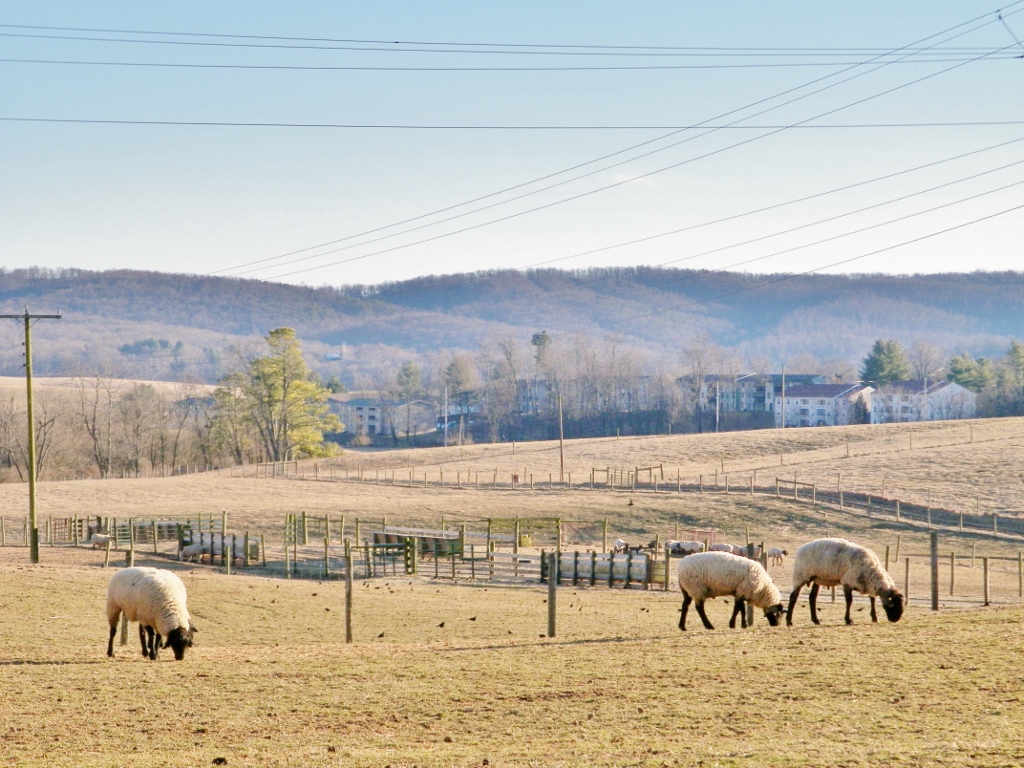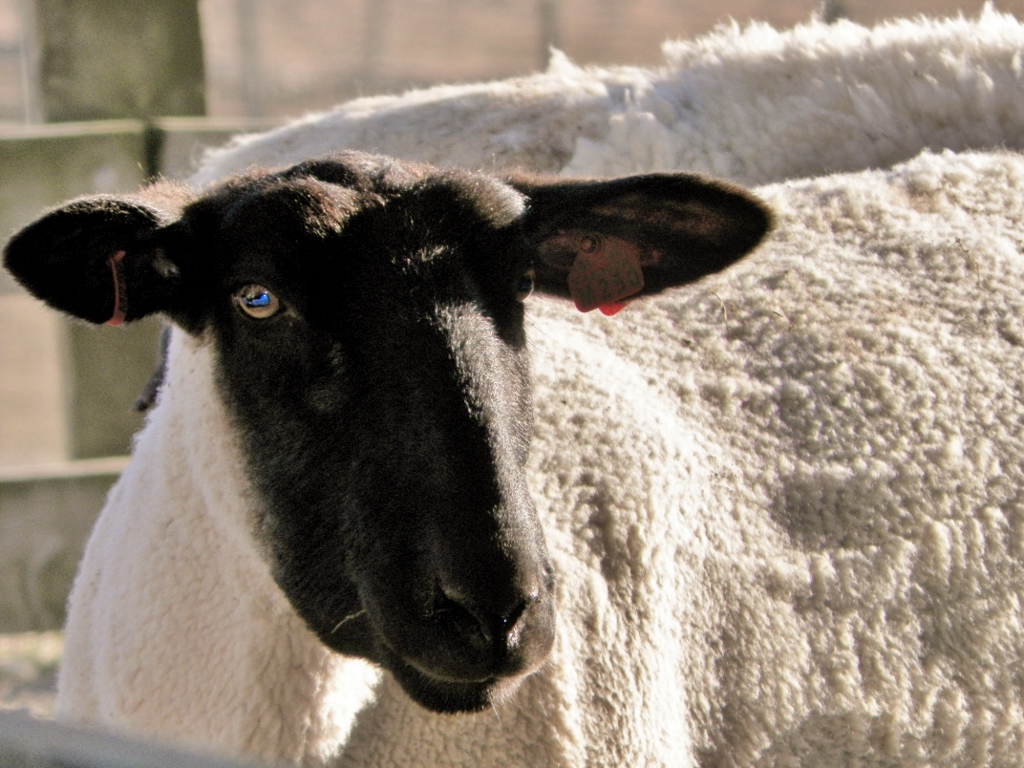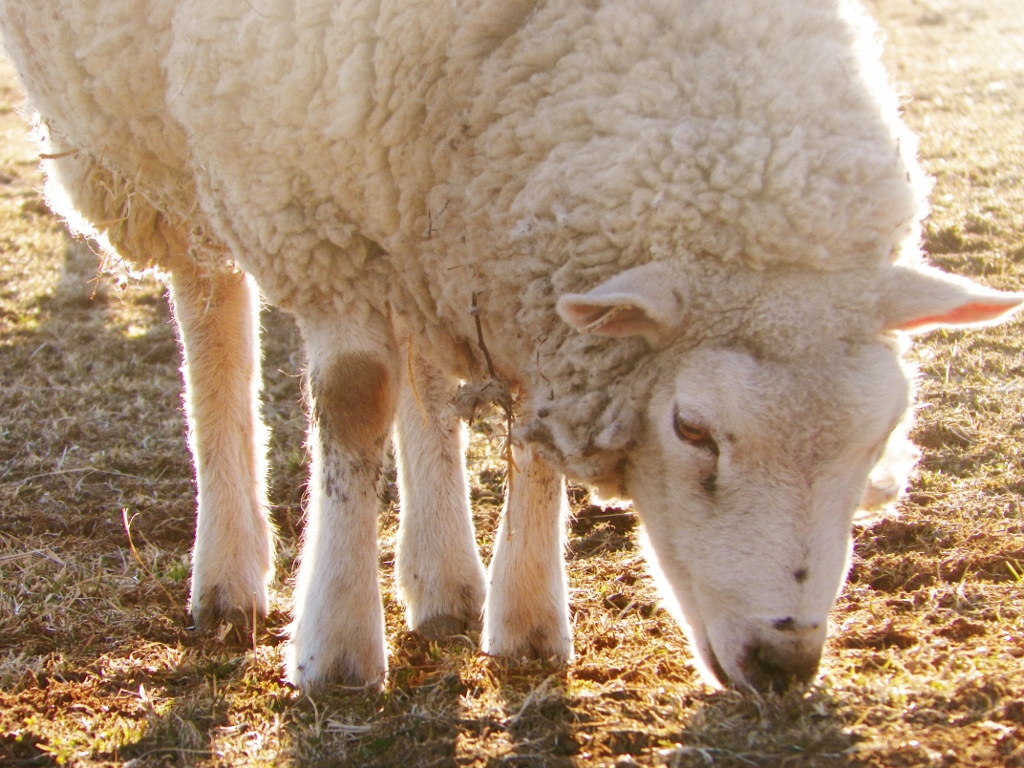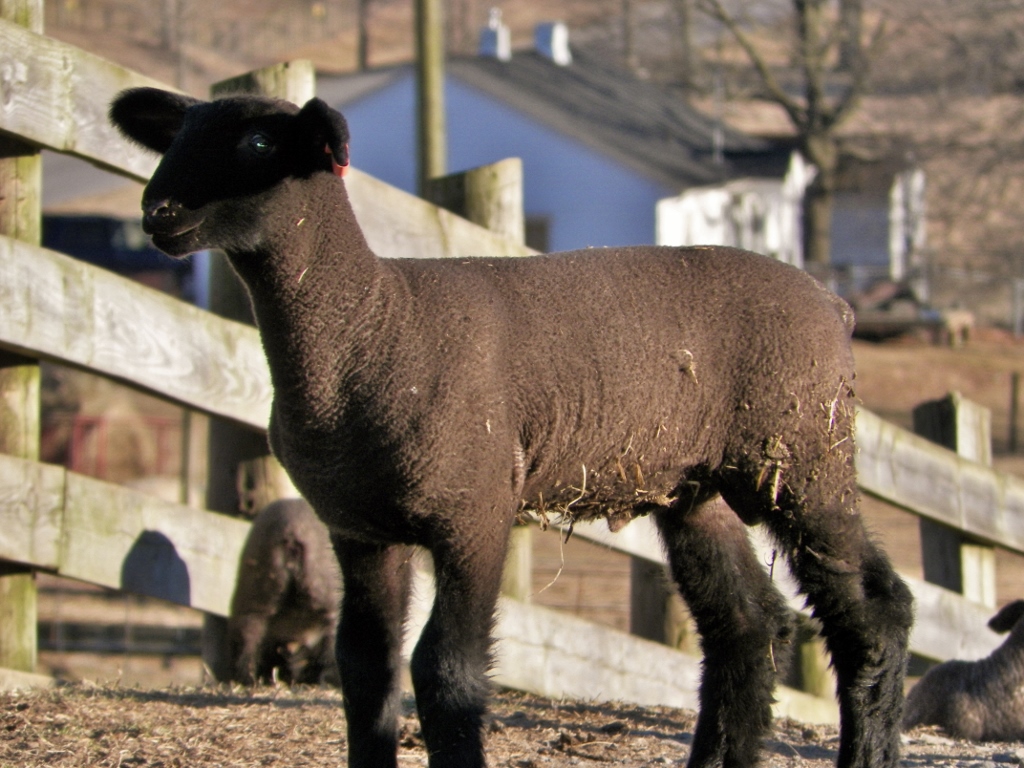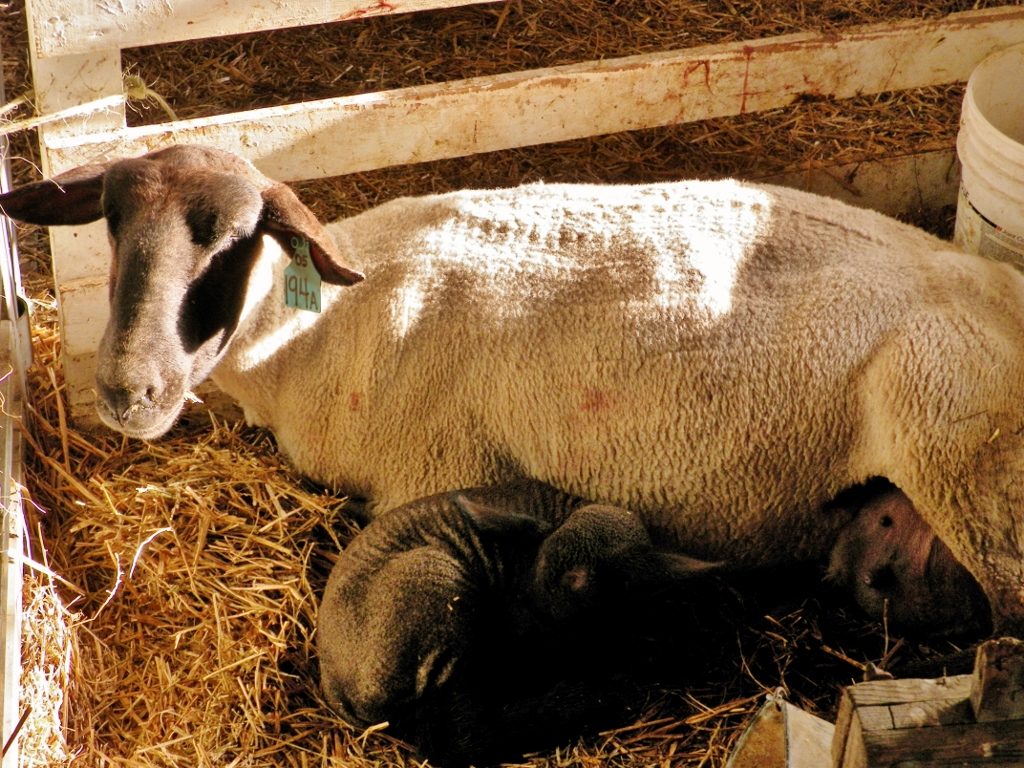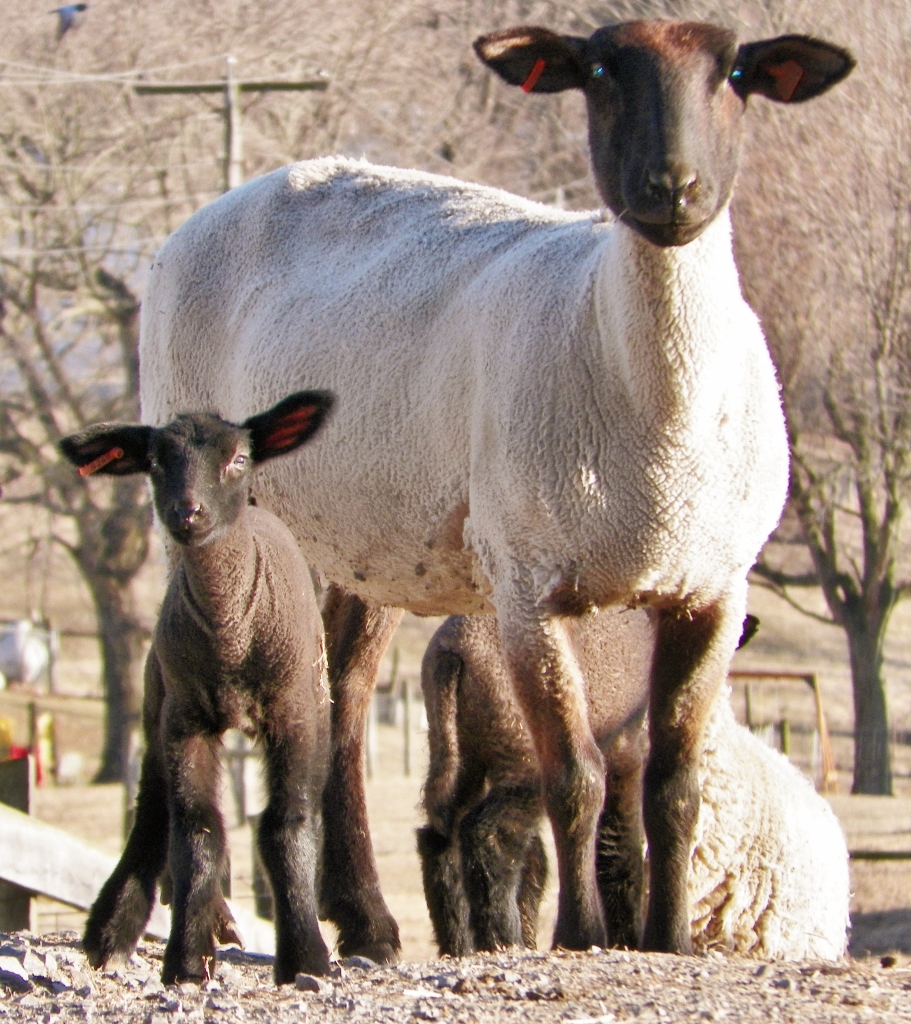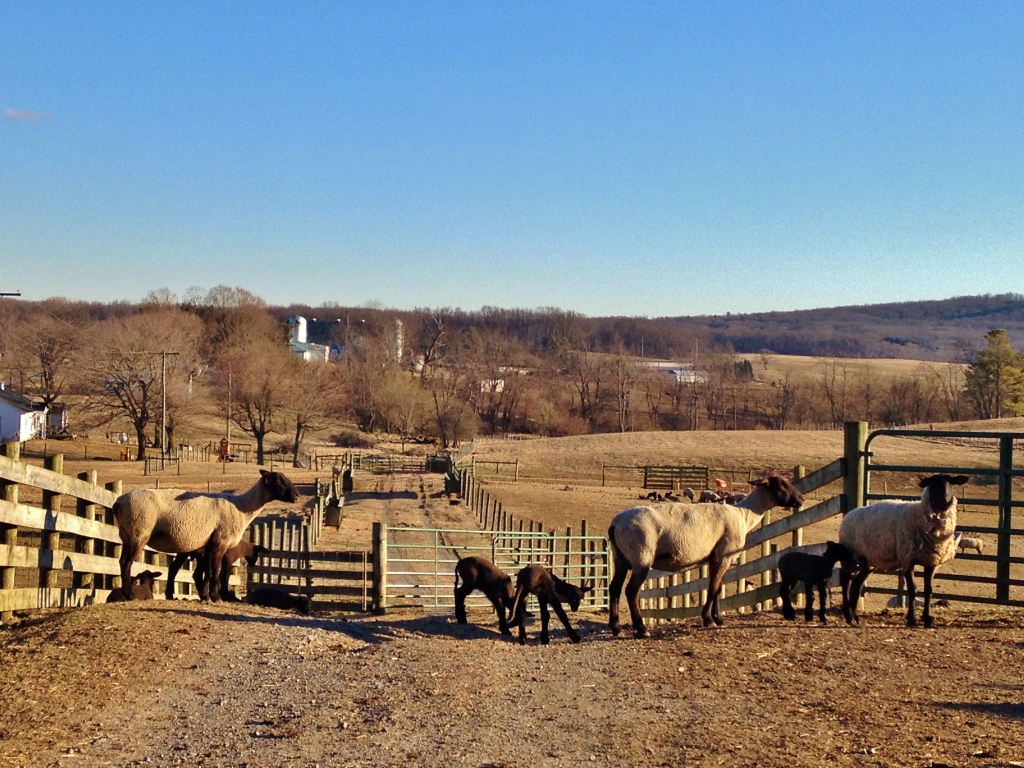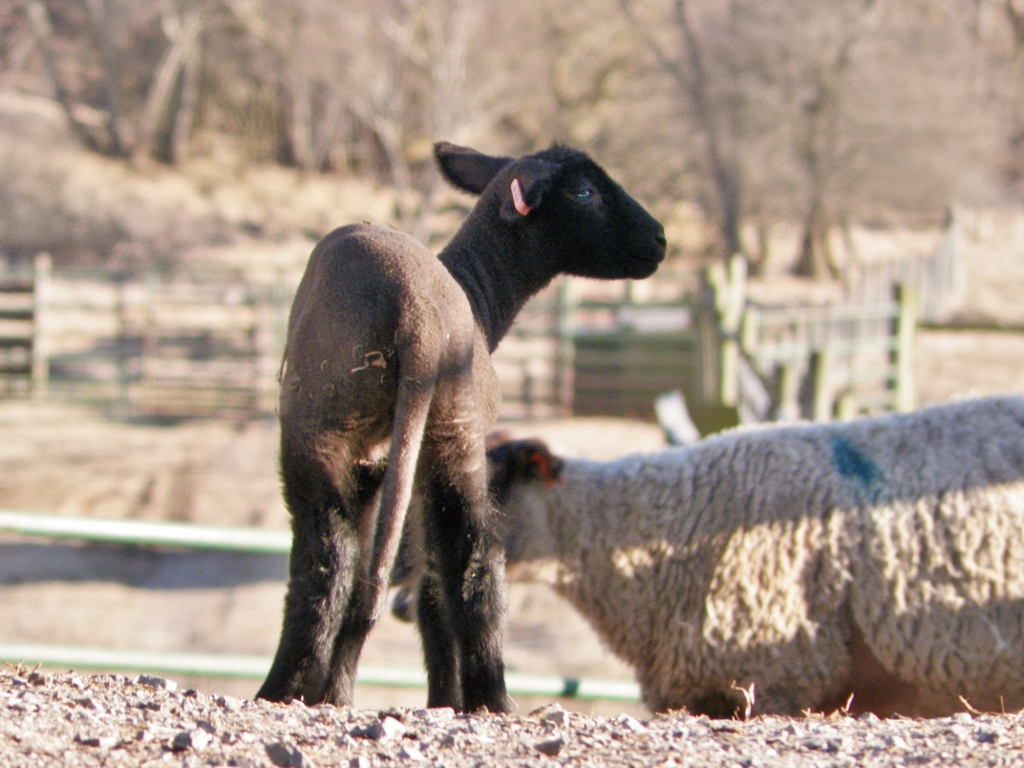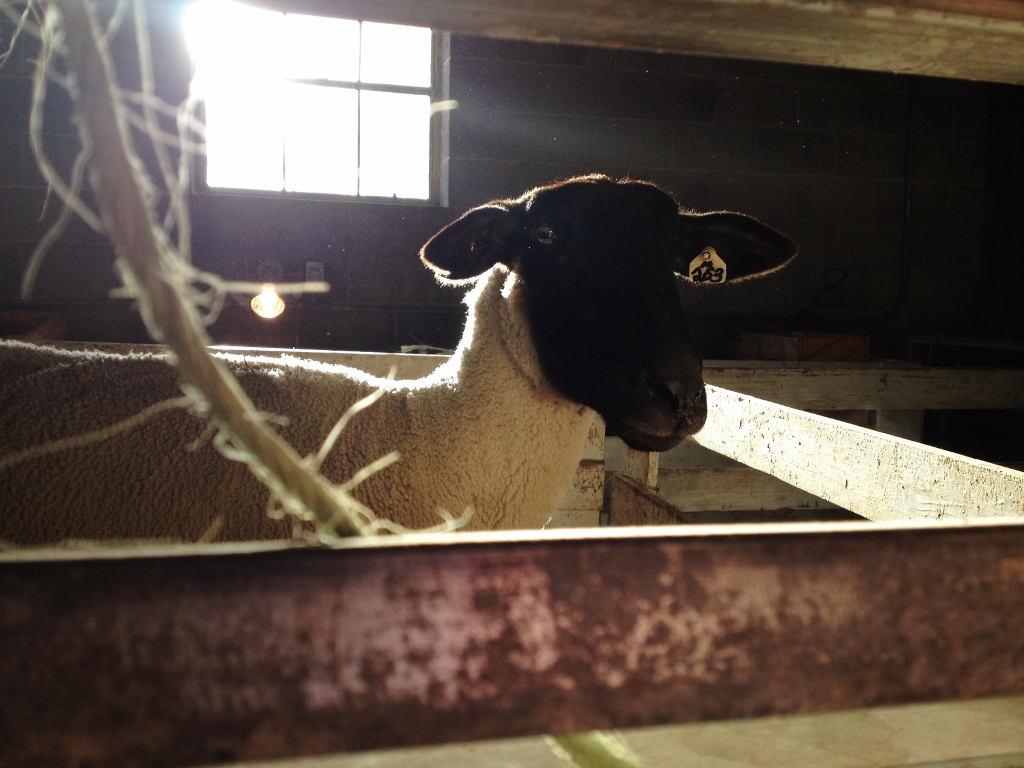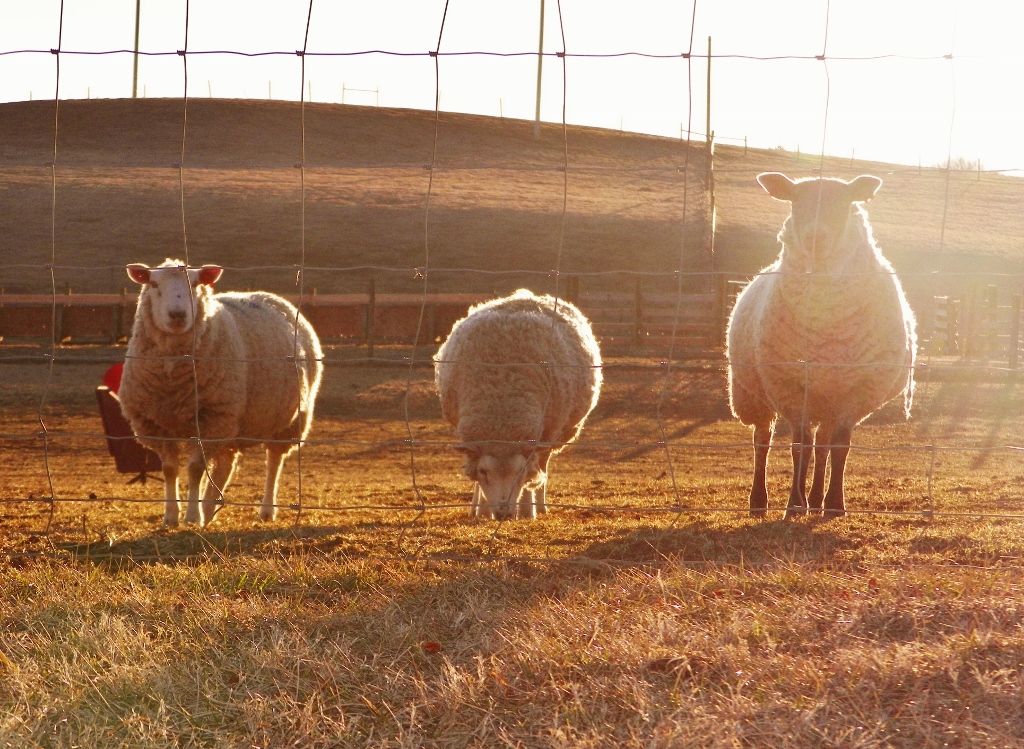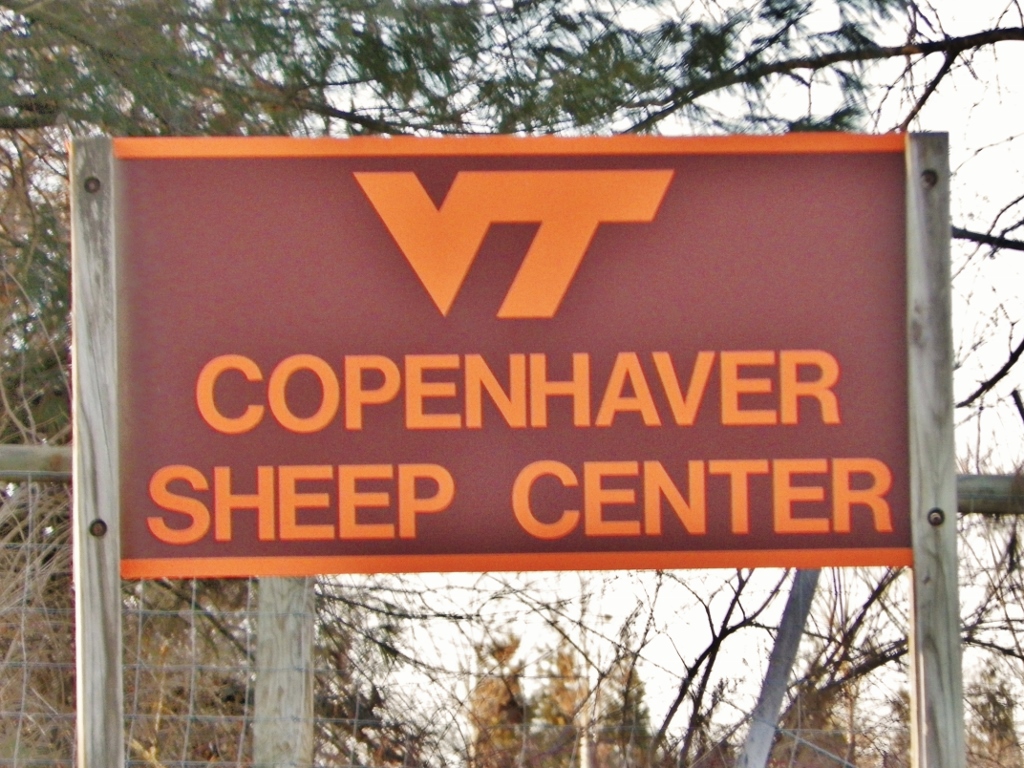 Named for retired animal science professor Jack Copenhaver, the center is located on the edge of Virginia Tech’s Blacksburg campus and has served as a teaching and research facility for years. Visitors who walk into the main barn in late winter will be greeted with the sight of ewes and newborn lambs, and the center’s pastures adjacent to Smithfield Road give the surrounding community a taste of the daily routine for livestock operations.
Named for retired animal science professor Jack Copenhaver, the center is located on the edge of Virginia Tech’s Blacksburg campus and has served as a teaching and research facility for years. Visitors who walk into the main barn in late winter will be greeted with the sight of ewes and newborn lambs, and the center’s pastures adjacent to Smithfield Road give the surrounding community a taste of the daily routine for livestock operations.
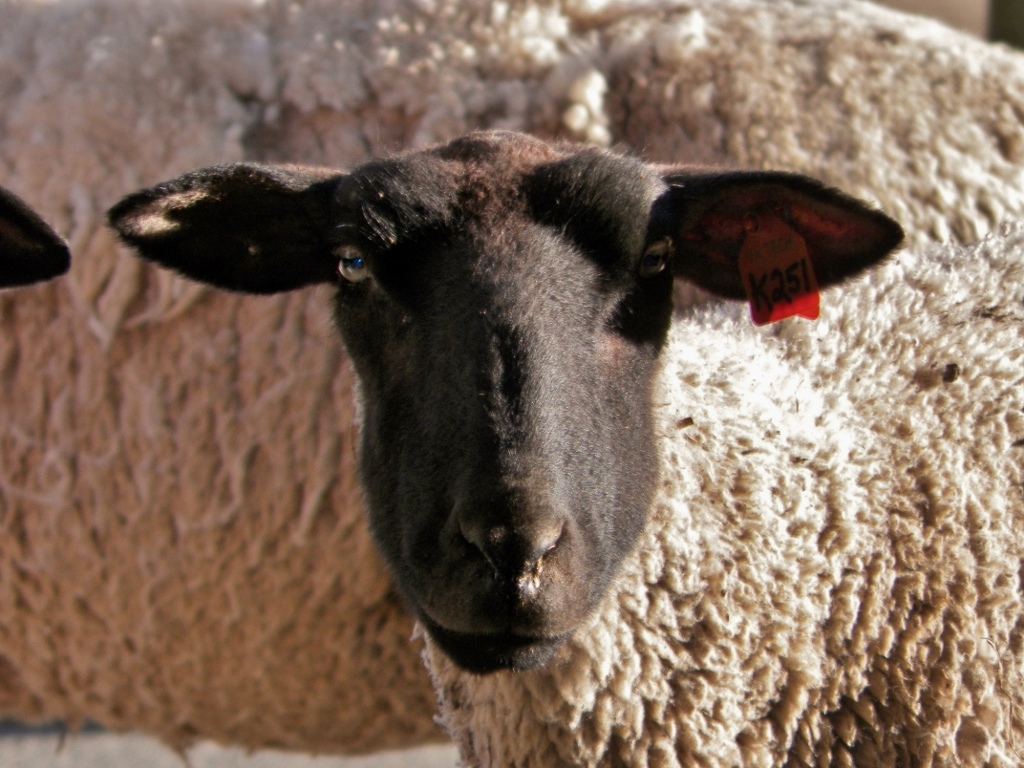 Copenhaver Sheep Center is home to a flock of Dorset sheep, which are white in color, and Suffolk sheep, which have white bodies and black faces and legs. Although these breeds produce wool, they are primarily used for meat production. The flocks at Copenhaver have been carefully selected to create lambs, rams, and ewes that are useful for teaching and research and appealing to individuals in the sheep industry. A flock of hair sheep also resides at the farm comprised of St. Croix sheep and some similar crossbreds. Unlike wool breeds like Dorsets and Suffolks, hair sheep originate from hot climates and have developed resistance and resilience to the harmful effects of parasites. This makes them valuable for research exploring parasite control in sheep and parasite resistance genes.
Copenhaver Sheep Center is home to a flock of Dorset sheep, which are white in color, and Suffolk sheep, which have white bodies and black faces and legs. Although these breeds produce wool, they are primarily used for meat production. The flocks at Copenhaver have been carefully selected to create lambs, rams, and ewes that are useful for teaching and research and appealing to individuals in the sheep industry. A flock of hair sheep also resides at the farm comprised of St. Croix sheep and some similar crossbreds. Unlike wool breeds like Dorsets and Suffolks, hair sheep originate from hot climates and have developed resistance and resilience to the harmful effects of parasites. This makes them valuable for research exploring parasite control in sheep and parasite resistance genes.
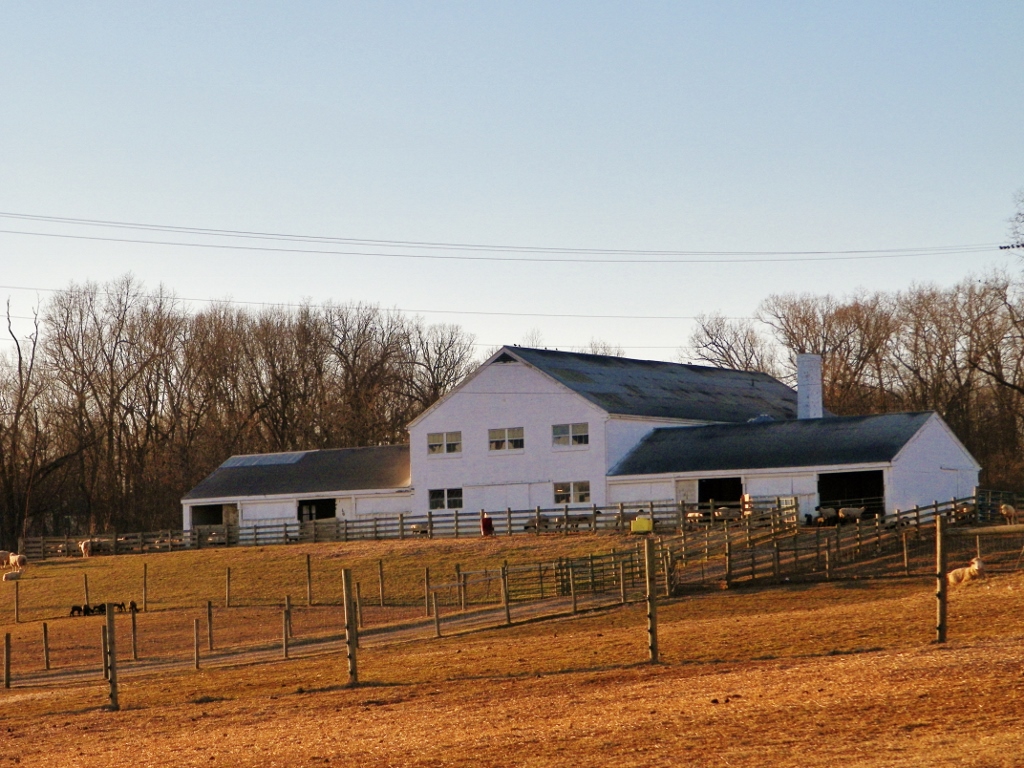 Dozens of undergraduate Animal Science students visit the center each semester for coursework in animal handling and livestock management. A senior-level livestock production course provides participants with hands-on industry experience at both Copenhaver Sheep Center and the neighboring beef center. Each spring, students are offered the opportunity to come to the facility and prepare an animal for the Little International showmanship contest hosted by Block and Bridle, an agricultural club for students.
Dozens of undergraduate Animal Science students visit the center each semester for coursework in animal handling and livestock management. A senior-level livestock production course provides participants with hands-on industry experience at both Copenhaver Sheep Center and the neighboring beef center. Each spring, students are offered the opportunity to come to the facility and prepare an animal for the Little International showmanship contest hosted by Block and Bridle, an agricultural club for students.
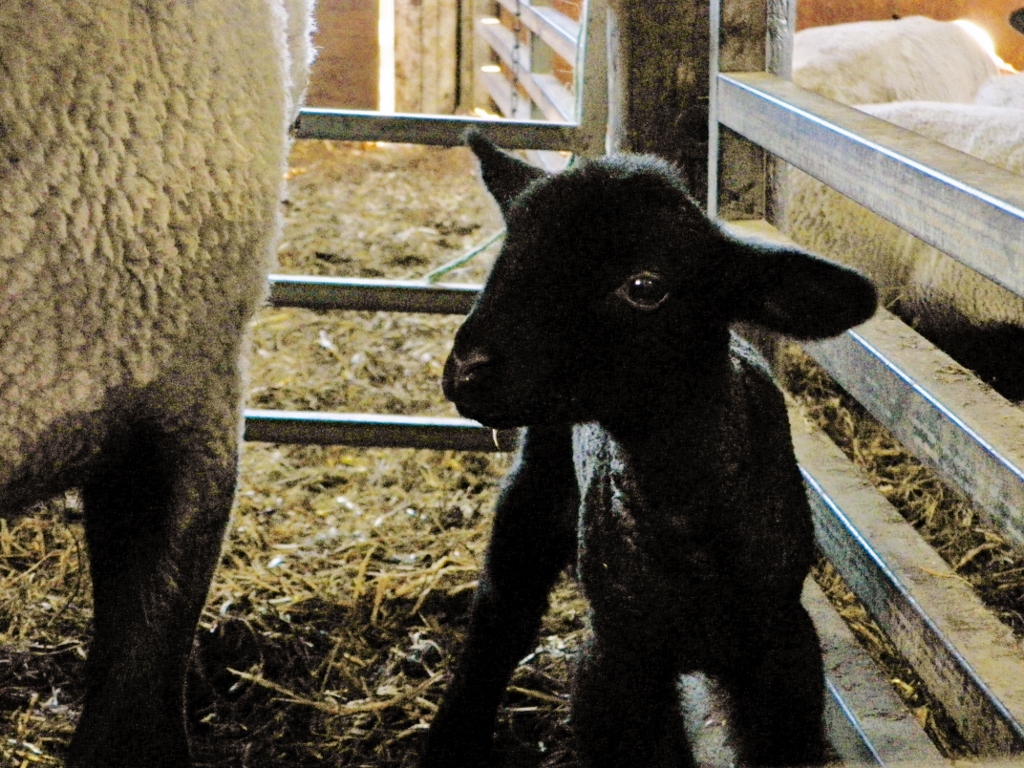 Furthermore, freshman in Animal Science partake in “lamb watch,” whereby each student is assigned a night to stay at the barn during lambing season in order to detect any birthing difficulties. Lambing season takes place primarily in the winter. Ewes and their newborn lambs are kept in individual pens in the barn, known as “lambing jugs,” to enhance maternal bonding and protect the offspring from the elements during their first days of life. Keeping the ewes in “jugs” also makes it easier for students and farm staff to monitor the health of the animals for several days post-lambing.
Furthermore, freshman in Animal Science partake in “lamb watch,” whereby each student is assigned a night to stay at the barn during lambing season in order to detect any birthing difficulties. Lambing season takes place primarily in the winter. Ewes and their newborn lambs are kept in individual pens in the barn, known as “lambing jugs,” to enhance maternal bonding and protect the offspring from the elements during their first days of life. Keeping the ewes in “jugs” also makes it easier for students and farm staff to monitor the health of the animals for several days post-lambing.
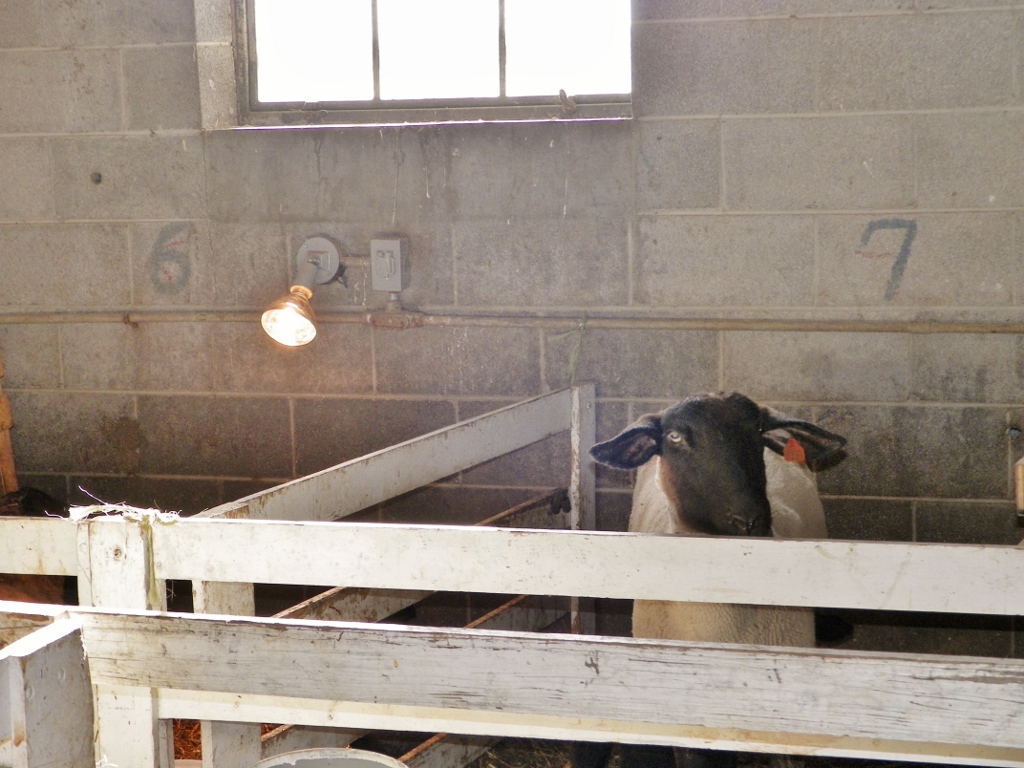
Ewes are kept in “lambing jugs” for a several days so that they can bond with their offspring and be monitored by students and farm staff.
While Copenhaver Sheep Center provides key learning opportunities for Virginia Tech’s 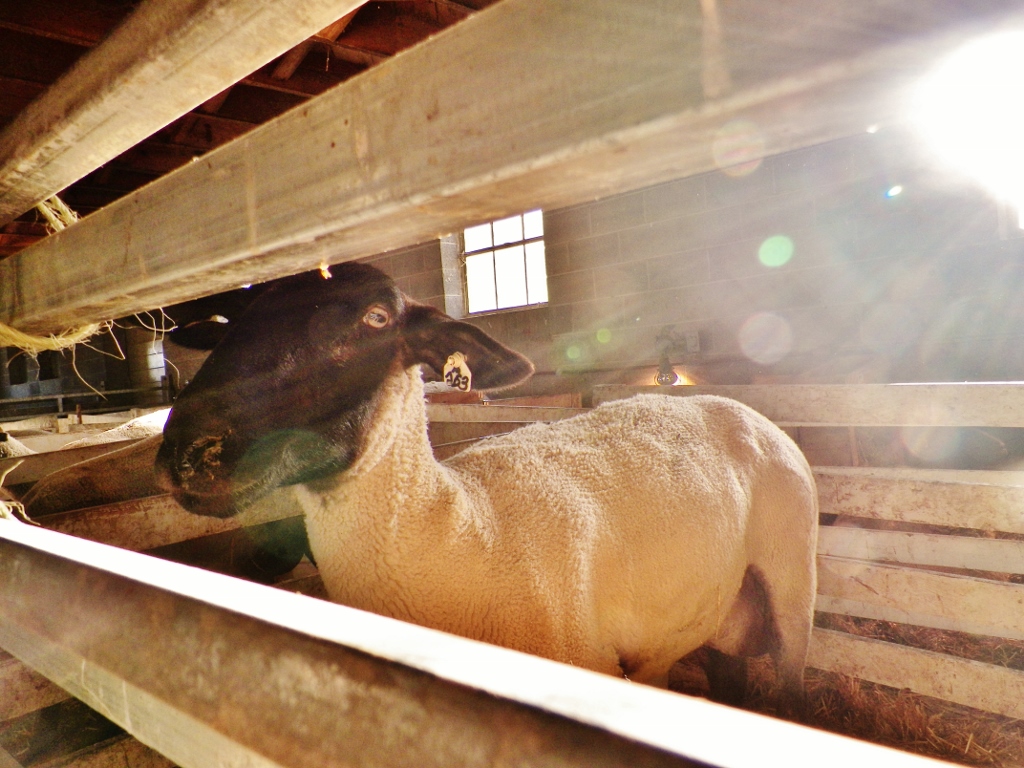 students, the work done at the center is also valuable to the state’s industry and has elevated the reputation of the Virginia sheep industry over the past few decades. Research at the center focusing on genetics, parasite resistance, ultrasonic evaluation of body composition, and other relevant areas is important to producers who wish to employ the most up-to-date management practices. Buyers seek rams and ewes from the Copenhaver Sheep Center at the annual production sale held on campus on Labor Day Weekend. Rams from the center are consigned into the Virginia Ram Lamb Performance Test Sale. These sales offer suitable breeding animals to buyers the industry, as any rams that are offered must pass a breeding soundness exam and meet standards for structure, type, and quality.
students, the work done at the center is also valuable to the state’s industry and has elevated the reputation of the Virginia sheep industry over the past few decades. Research at the center focusing on genetics, parasite resistance, ultrasonic evaluation of body composition, and other relevant areas is important to producers who wish to employ the most up-to-date management practices. Buyers seek rams and ewes from the Copenhaver Sheep Center at the annual production sale held on campus on Labor Day Weekend. Rams from the center are consigned into the Virginia Ram Lamb Performance Test Sale. These sales offer suitable breeding animals to buyers the industry, as any rams that are offered must pass a breeding soundness exam and meet standards for structure, type, and quality.
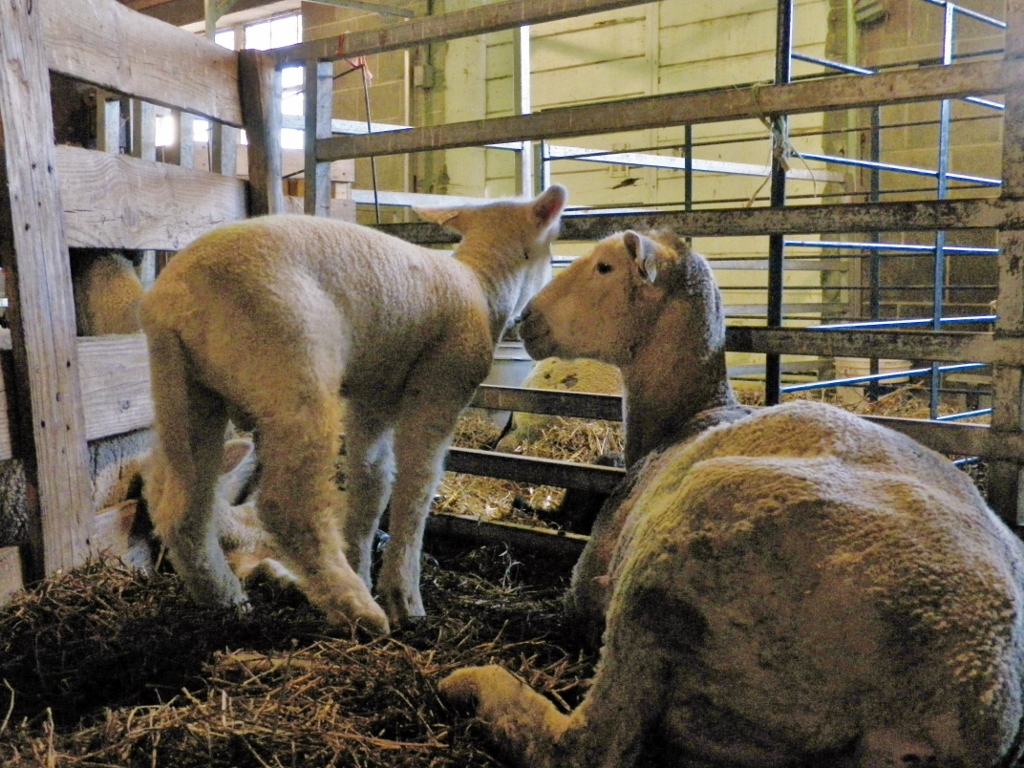 Besides serving the industry with high-quality animals and important research and providing a venue for students to learn about animal management, Copenhaver Sheep Center has also helped Virginia Tech reach its goal of serving locally-produced food in its dining halls. Students have the opportunity to purchase lamb and other meats harvested from the campus farms from the Farms and Fields Project in Owens Food Court.
Besides serving the industry with high-quality animals and important research and providing a venue for students to learn about animal management, Copenhaver Sheep Center has also helped Virginia Tech reach its goal of serving locally-produced food in its dining halls. Students have the opportunity to purchase lamb and other meats harvested from the campus farms from the Farms and Fields Project in Owens Food Court.
While not every Virginia Tech undergraduate will visit the center for coursework, the many students and Blacksburg residents who walk daily past the sheep grazing in the fields catch a glimpse of a facility with a rich past that has made a lasting impression on the state’s industry and family sheep producers.
Additional Resources for Readers:
Useful Virginia Cooperative Extension Sheep and Goat Publications

